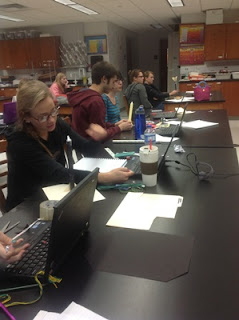This is a chronicle of teaching Earth System Science and Educational Technology at NMU. http://www.nmu.edu
Wednesday, September 18, 2013
Model rockets: DRY MIX
Flying model rockets is a relatively safe and inexpensive way for students to learn the basics of forces and the response of a vehicle to external forces. A model rocket is subjected to four forces in flight; weight, thrust, and the aerodynamic forces, lift and drag.
There are many different types of model rockets. The first and simplest type of rocket that a student encounters is the compressed air, or stomp rocket. The air rocket system consists of two main parts, the launcher and the rocket.
http://exploration.grc.nasa.gov/education/rocket/rktstomp.html
http://www.nasa.gov/pdf/295786main_Rockets_Adv_High_Power_Paper.pdf
WHAT STUDENTS DO: Test a rocket model and predict its motion. Curiosity about what lies beyond our home planet led to the first rocket launches from Earth and to many exploration missions since. Using simple materials (soda straws and paper), students will experience the processes involved in engineering a rocket. Conducting engineering tests, students will have the opportunity to answer a research question by collecting and analyzing data related to finding out the best nose cone length and predicting the motion of their model rockets. In this collection, this lesson builds on the concept of using models encountered in Lessons 1-3, and introduces the concepts of prediction and hypothesis.
http://mars.jpl.nasa.gov/participate/marsforeducators/soi/MarsSOI2012_Lesson5.pdf
When I teach dependent and independent variables I tie them into graphing and data collection.
When my students are looking at an experiment I tell them to ask the following questions to determine the variables.
1. What is being tested in the experiment? or What is the problem the experiment is to answer? (This directs you to the independent variable?)
2. What are the results in the experiment? or What are the outcomes in the experiment?
I also use the following Acronym DRY MIX.
DRY MIX also helps students create a graph from the data collect in experiments.
D-Dependent variable
R- Responding variable
Y- (goes on) Y-axis
M-Manipulated variable
I-Independent variable
X-(goes on) X-axis
Subscribe to:
Post Comments (Atom)

































No comments:
Post a Comment